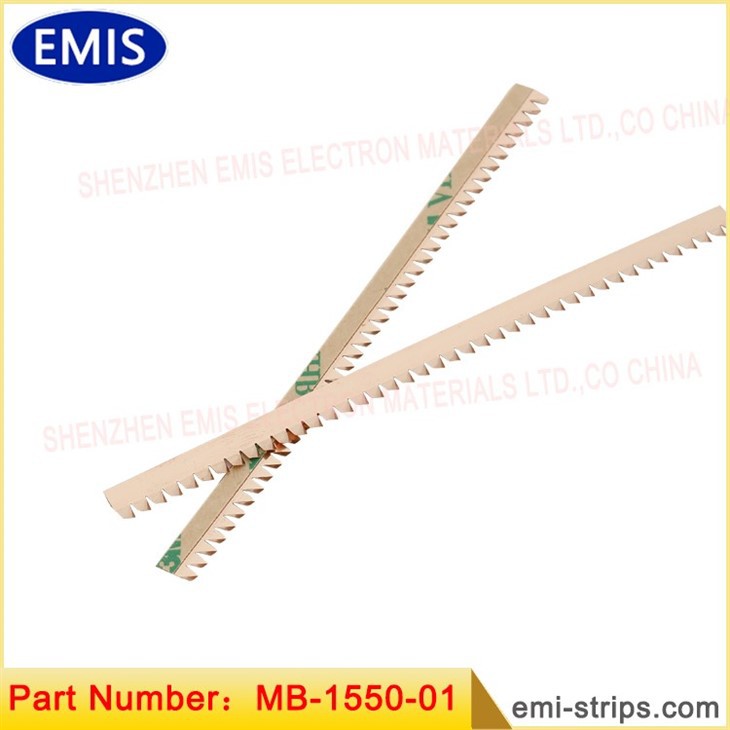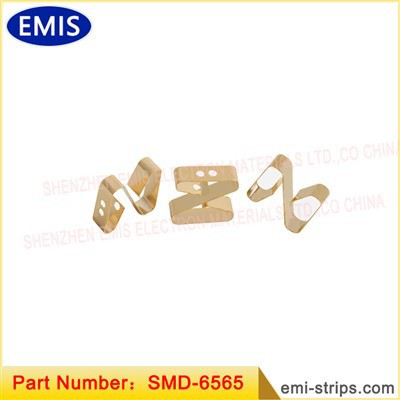Hey there! As a fingerstock supplier, I've seen firsthand how crucial fingerstock can be for the heat dissipation of equipment. In this blog, I'm gonna break down how fingerstock impacts heat dissipation and why it's such a big deal.
First off, let's talk about what fingerstock is. Fingerstock is basically a flexible metal strip with fingers or tabs that can be used for a variety of applications. It's often made from materials like beryllium copper (BeCu), which is known for its excellent electrical conductivity and corrosion resistance.
So, how does fingerstock influence heat dissipation? Well, one of the main ways is through its ability to provide a good electrical and thermal connection between different components in a piece of equipment. When two components are in contact, there's usually some resistance at the interface, which can generate heat. Fingerstock helps to reduce this resistance by providing a larger contact area and a more uniform pressure distribution. This means that heat can transfer more easily from one component to another, and ultimately, out of the equipment.
For example, let's say you have a circuit board with a heat-generating component like a microprocessor. The microprocessor needs to dissipate heat to prevent it from overheating and malfunctioning. By using fingerstock to connect the microprocessor to a heat sink, you can improve the thermal conductivity between the two components. The fingerstock acts as a bridge, allowing heat to flow more efficiently from the microprocessor to the heat sink, which can then dissipate the heat into the surrounding environment.
Another way that fingerstock can influence heat dissipation is by its design. Some fingerstock designs are specifically engineered to enhance heat transfer. For instance, the Solid Top Symmetrical Slotted BeCu Strips 0097095802 have a unique slotted design that increases the surface area available for heat transfer. This allows for more efficient cooling of the equipment.
Similarly, the Narrow Edges EMI - strips 0097055002 are not only great for electromagnetic interference (EMI) shielding but also contribute to heat dissipation. Their narrow edges and flexible design ensure good contact with the components, facilitating heat flow.
The Contact BeCu Finger Strips are another example. These strips are made of high - quality BeCu, which has excellent thermal properties. The fingers on the strips can conform to the shape of the mating surfaces, providing a tight and reliable connection that promotes heat transfer.
In addition to improving thermal conductivity, fingerstock can also help with airflow within the equipment. In some cases, fingerstock can be used as a spacer or support structure, creating channels for air to flow. This can enhance the natural convection cooling process, where hot air rises and is replaced by cooler air. By optimizing the airflow, the equipment can dissipate heat more effectively.
Now, let's consider the impact of fingerstock on different types of equipment. In electronic devices like laptops and smartphones, heat dissipation is crucial for maintaining performance and reliability. The small size of these devices means that heat can build up quickly, and any inefficiencies in the cooling system can lead to reduced battery life, slower processing speeds, and even hardware failure. Fingerstock can be used to connect the various components inside these devices, such as the CPU, GPU, and battery, to heat sinks or other cooling elements. This helps to keep the temperature under control and ensures that the device operates smoothly.


In industrial equipment, such as power supplies and control panels, heat dissipation is also a major concern. These devices often generate a large amount of heat during operation, and if not properly managed, it can lead to premature component failure and costly downtime. Fingerstock can be used to improve the thermal management of these systems, allowing them to operate more efficiently and reliably.
In the automotive industry, fingerstock plays an important role in the heat dissipation of electronic components in vehicles. With the increasing use of advanced electronics in cars, such as infotainment systems, engine control units, and electric vehicle batteries, the need for effective heat management has become more critical. Fingerstock can be used to connect these components to heat sinks or cooling systems, helping to maintain their performance and longevity.
When it comes to choosing the right fingerstock for heat dissipation, there are a few factors to consider. First, you need to think about the material. As mentioned earlier, BeCu is a popular choice due to its excellent electrical and thermal properties. However, there are other materials available as well, such as stainless steel and phosphor bronze, which may be more suitable for certain applications.
You also need to consider the design of the fingerstock. The shape, size, and number of fingers can all affect its performance. For example, a fingerstock with more fingers may provide a larger contact area, but it may also be more flexible and less rigid. You need to find the right balance based on your specific requirements.
Another important factor is the environmental conditions in which the equipment will operate. If the equipment will be exposed to high temperatures, humidity, or corrosive substances, you need to choose a fingerstock that can withstand these conditions.
In conclusion, fingerstock has a significant influence on the heat dissipation of equipment. Whether it's through improving thermal conductivity, enhancing airflow, or providing a reliable connection between components, fingerstock plays a crucial role in keeping equipment cool and operating efficiently. If you're in the market for fingerstock for your heat dissipation needs, I'd love to have a chat with you. We can discuss your specific requirements and find the perfect solution for your equipment.
References
- "Thermal Management in Electronic Systems" - A technical guide on heat dissipation in electronics.
- "Materials for Electrical and Thermal Applications" - A study on the properties of different metals used in fingerstock.






